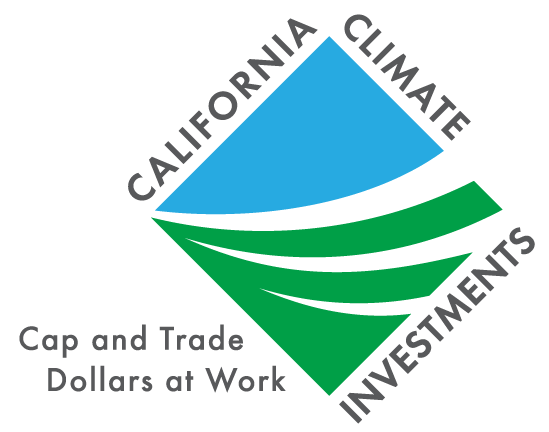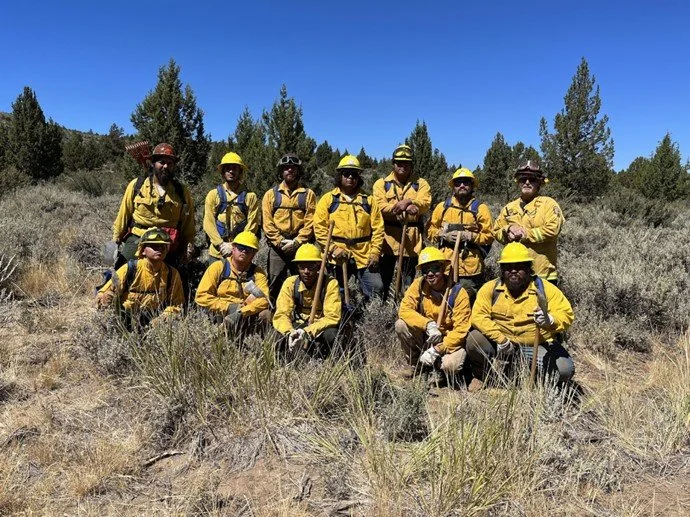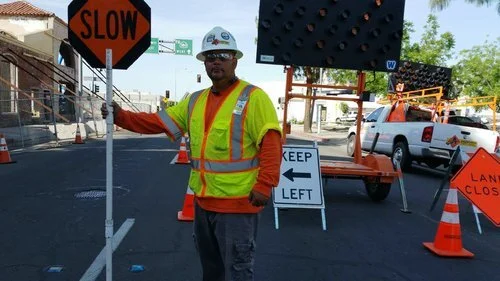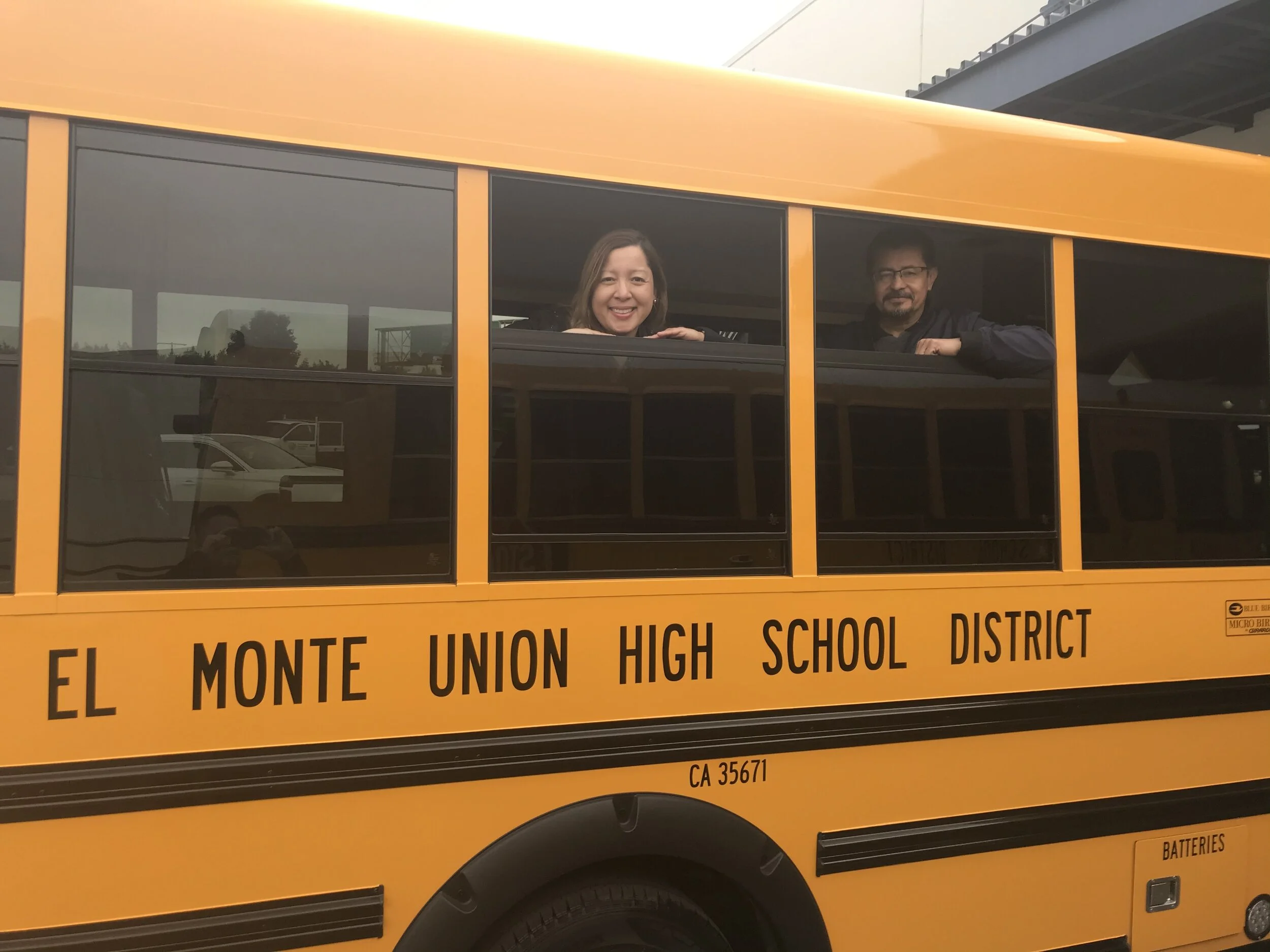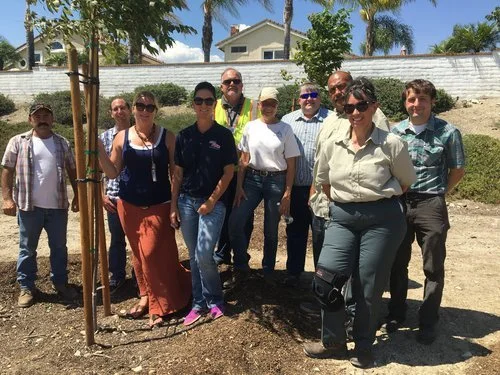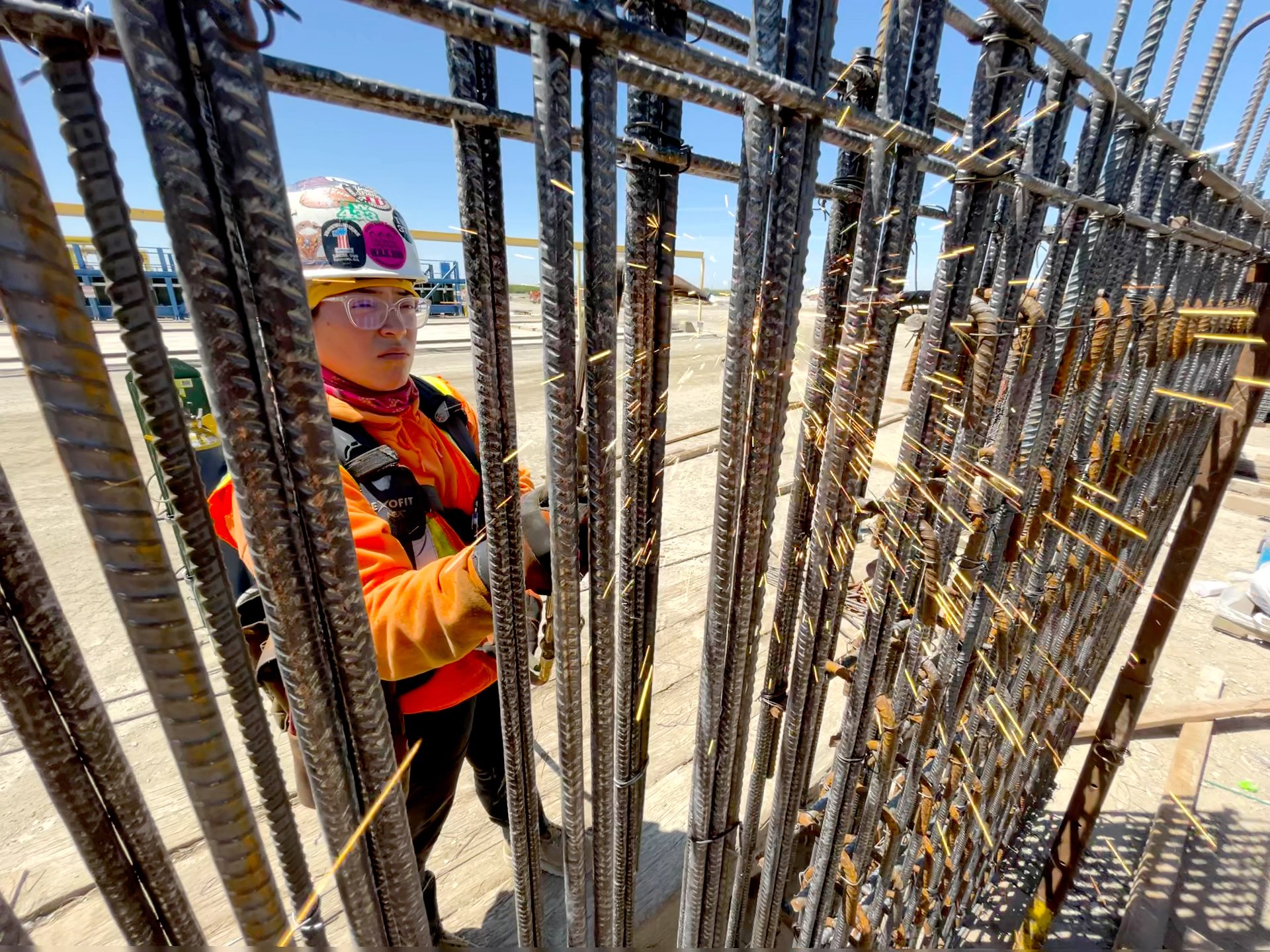
Workforce Development
As California’s economy continues to transition to support clean energy and transportation, improved mobility, and sustainable land use and management, workforce needs will evolve. The types of available jobs and skills needed to obtain and progress in those careers will also change. California Climate Investments is helping to facilitate this transition through dedicated workforce development and training, establishing partnerships with training programs and academic institutions, and investing in projects that provide employment opportunities while facilitating greenhouse gas emissions reductions. For example, some programs are focused specifically on developing the workforce for a low carbon future, funding job training and workforce development in building energy efficiency and forestry sectors.
Workforce Development Updates
In response to the passage of Assembly Bill 680 in 2021, CARB updated the Funding Guidelines for Agencies that Administer California Climate Investments to incorporate workforce standards that support the creation of high-quality jobs in applicable California Climate Investments programs.
Investments in Action: Projects Supporting Workforce Development
Programs that Fund Workforce Development and Training
Learn about all past and present programs that fund workforce development and training, including programs that are not actively receiving California Climate Investments funding.
The Inclusive, Diverse, Equitable, Accessible, and Local (IDEAL) Zero-Emission Vehicle (ZEV) Workforce Pilot funds projects that support ZEVs, ZEV infrastructure, and ZEV-related commercial technologies in California, with focus on priority populations.
The California Workforce Development Board will develop industry-based, worker-focused training partnerships that connect California’s “high road” employers with existing established workforce development programs to build skills and capacity for training and employment within various employment sectors.
The California Governor’s Office of Emergency Services (Cal OES) will fund the procurement and maintenance of fire engines for local fire agencies and support of the California Fire and Rescue Mutual Aid System. The goal of the program is to increase and maintain emergency response capabilities within the State’s Fire and Rescue Mutual Aid System in order to help protect communities from wildfires and other disasters.
Local assistance grants to fire departments within High Hazard Severity Zones to pre-position emergency services crews and equipment during red flag events in order to protect communities from wildfires.
Through the Training and Workforce Development Program, the California Conservation Corps employs young adults for a year of service resulting in job skills and work experience to launch meaningful careers. Corpsmembers implement forest fuel reduction, habitat restoration, and energy efficiency projects which reduce greenhouse gas emissions.
Advanced Technology Freight Demonstration Projects provide funding for pre-commercial demonstrations of advanced vehicles, engines, equipment, and transportation systems. These advanced technology projects demonstrate zero-emission or near zero-emission vehicles and equipment that use less petroleum and emit less GHG emissions.

California Climate Investments Job Quality Principles
Workforce development efforts should achieve social, economic, and environmental co-benefits by improving job quality and access to high-quality jobs for priority populations, women, those facing barriers to employment, and others that have been underserved or underrepresented. A high-quality job facilitates an individual’s economic mobility by providing, at minimum, compensation at or above the regional median wage and offers vacation and sick leave, training opportunities, and retirement benefits featuring an employer contribution. Access to high-quality jobs and training opportunities fosters economic security.
Read the Funding Guidelines for Agencies that Administer California Climate Investments to learn more about California Climate Investments Job Quality Principles, which include wage and benefit standards, training pathways and upward mobility, local and targeted hiring mechanisms, supportive organizational culture, worker voice and representation, and workplace safety.
What is Assembly Bill 680?
Assembly Bill 680 directed CARB to work with the California Workforce Development Board to update the Funding Guidelines to provide guidance on the following workforce standards for certain California Climate Investments programs:
Fair and responsible employer standards
Inclusive procurement policies
Prevailing wage for construction work
Community workforce agreements for construction projects > $1,000,000
Preference for projects with educational/training partnerships
Preference to applicants that demonstrate creation of high-quality jobs
Applicability
The bill is limited to programs that receive continuous Greenhouse Gas Reduction Fund appropriations. Assembly Bill 680 and subsequent legislation exempted three of these programs, leaving the following four programs subject to the Assembly Bill 680 requirements:
Assembly Bill 680 then establishes exemptions for projects that involve federal funding, 100% affordable unit housing projects, technical assistance, research, and applicants that are not employers. The end result of these exemptions is a specific subset of projects for which there is a compliance obligation under the bill. Although these standards are only required for a subset of California Climate Investments programs and projects, all programs are encouraged to incorporate the job quality principles in the Funding Guidelines for Agencies that Administer California Climate Investments to support a robust workforce in the new, low-carbon economy and improve access to high-quality jobs.
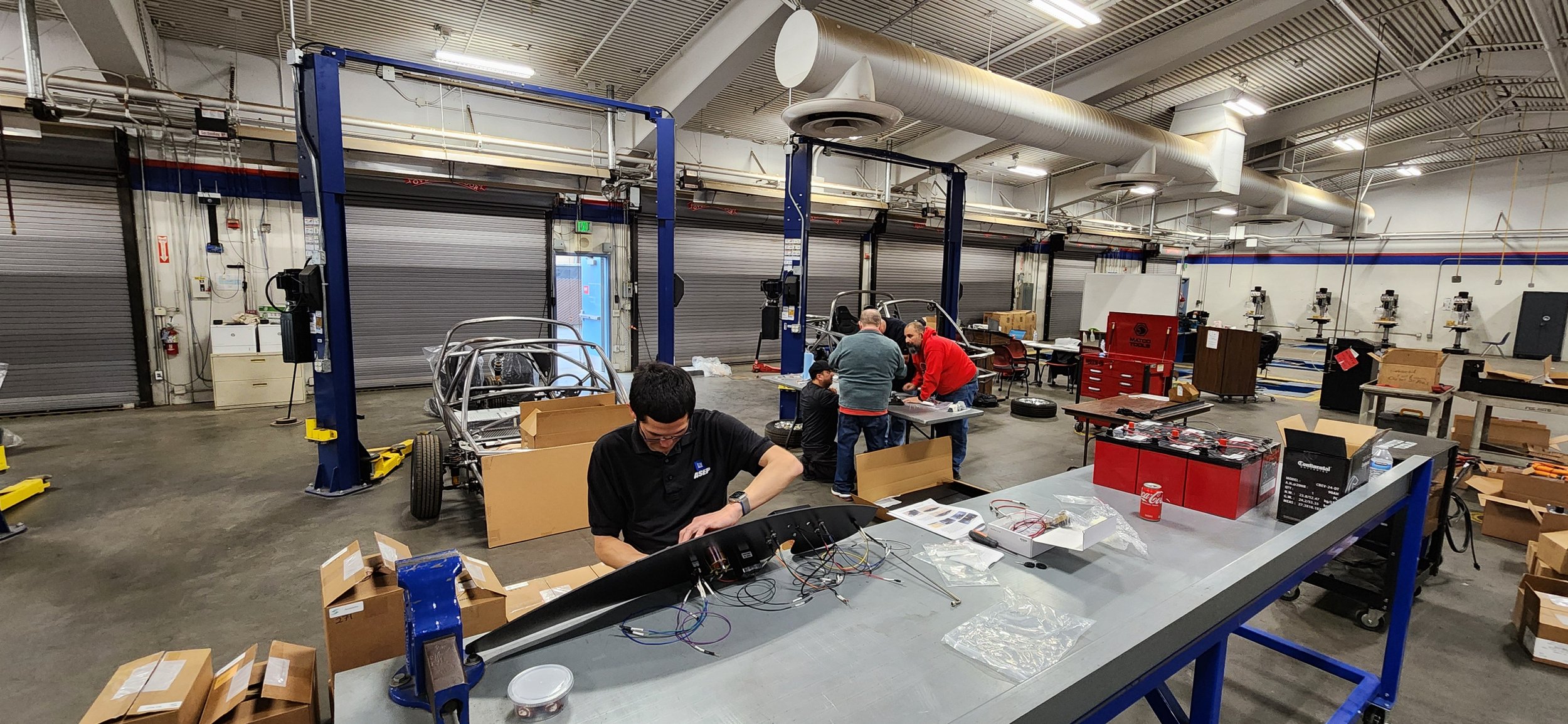
Jobs Reporting
Some agencies administering California Climate Investments projects report information on jobs, which reflects actual employment associated with a project. View the most up-to-date jobs reporting template here.
In addition to jobs reporting, CARB also tracks the economic impacts of California Climate Investments through the Jobs Co-Benefit Assessment Methodology. This methodology uses information about general project expenses and known relationships between various economic sectors to prospectively estimate the number of direct, indirect, and induced jobs supported by California Climate Investments projects.
Directly Supported Jobs: Labor needed to complete work for a California Climate Investments project (e.g., housing construction, ecosystem restoration).
Indirectly Supported Jobs: Labor related to the supply chains that support projects. Funding a project generates demand for materials and equipment to complete the project, leading to expanded production and employment in upstream industries (e.g., manufacturing construction equipment, zero‑emission vehicle parts, solar panel components).
Induced Jobs: Labor related to the spending of income from directly and indirectly supported jobs which in turn stimulates demand for goods and services in the wider California economy.
Though the Job Co-Benefit Assessment Methodology provides general estimates of the direct, indirect, and induced jobs, it cannot estimate when these jobs will occur, how long the jobs will last, or any metrics related to job quality. Read the Annual Report to the Legislature on California Climate Investments Using Cap and Trade Auction Proceeds to view the latest modeled jobs estimates.
Jobs Reporting Resources and Policy Guidance
Featured Resources
California Air Resources Board
This table provides the 2024 regional median wage by county using the regional median wage methodology.
California Air Resources Board
This supplemental guidance provides a standard methodology for administering agencies to determine regional median wage.
California Air Resources Board
The benefit assessment tool is used to help decide if a project benefits a priority population. Administering agencies, applicants, and/or funding recipients use the tool to report on projects selected through a solicitation released after February 28, 2025.
California Air Resources Board
Benefit Criteria Tables are used by administering agencies and applicants to determine if a project selected through a solicitation released on or before February 28, 2025 will meaningfully address an important community or household need and provide a benefit.
California Air Resources Board
Administering agencies must use CARB tools to develop effective programs and demonstrate compliance with program requirements. Resources on this page include quantification methodologies and calculator tools for estimating GHG emissions reductions and co-benefits; benefit criteria tables for determining benefits to priority populations; and reporting templates for reporting outcomes.
California Air Resources Board
Provides uniform methods that can be applied statewide and are accessible by all applicants and funding recipients, uses existing and proven tools or methods, where available, and identifies the appropriate data needed to calculate co-benefits.
State & Federal Program Implementation Resources
The resources included below were developed by state and federal agencies and include recommendations for public programs on how to design, monitor, and evaluate programs to support high-quality jobs.
Featured Resources
Mental Health Services Oversight and Accountability Commission
California has five voluntary standards that organizations may adopt to support the mental health of their employees. The standards can help organizations create policies and processes to address mental health in the workplace in ways that meet employee needs.. Learn more about how creating a positive workplace culture and supporting mental health improves job quality.
Department of Civil Rights
The California Department of Civil Rights investigates claims related to harassment, discrimination, and retaliation. Read about how to file a complaint, responding to a complaint, possible outcomes, and more.
United States Department of Labor
The federal Department of Labor champions job quality through this list of good job principles. These eight principles create a framework for workers, businesses, labor unions, advocates, researchers, state and local governments, and federal agencies for a shared vision of job quality.
Department of Industrial Relations
Pre-apprenticeships and registered apprenticeships are overseen by DIR’s Division of Apprenticeship Standards. Learn how to become an apprentice or start an apprenticeship program.
Department of Industrial Relations
DIR oversees compliance with labor laws. Workers may report a violation to DIR. View laws, regulations, and policies and other resources for workers and employers.
Department of Industrial Relations
California employers have many different responsibilities under the California Occupational Safety and Health Act of 1973 and Title 8 of the California Code of Regulations. Learn about these employer responsibilities related to health and safety.
Department of Industrial Relations
CalOSHA oversees workplace safety. Learn about CalOSHA, access safety and health guidance and resources, and find information for workers and employers.
Department of Industrial Relations
DIR maintains authority over labor requirements related to public works. Learn more about public works and prevailing wage.
Department of Industrial Relations
The Public Works manual outlines requirements relating to public works and prevailing wage.
Department of Industrial Relations
The Department of Industrial Relations (DIR) posts prevailing wage determinations twice a year that regulate covered workers. View determinations and find answers to frequently asked questions.
California Workforce Development Board
Learn about the elements of a high-quality job and how high road training partnerships approach is creating a workforce development system that ensures job quality and an ecosystem of economic prosperity.
California Workforce Development Board
The California Workforce Development Board (CWDB) includes job quality as one of the three elements of its High Road vision. Ranging from transportation to healthcare, hospitality to construction, the High Road approach embodies the sector strategy championed by the Board: industry partnerships that deliver equity, climate resilience, and job quality. Along with these program investments, CWDB is producing a body of policies and principles to guide alignment across the workforce and education system.
Contact Us!
Contact us with your comments, ideas, or questions using the form below:
We would like your input on how to best foster equitable workforce development through California Climate Investments programs. Please let us know any thoughts, concerns, or suggestions in the comment box below.
